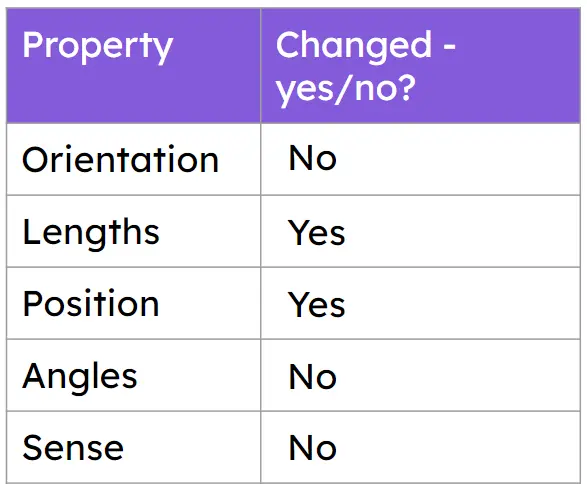Myths about teaching can hold you back


- Year 7
Problem solving with transformations
I can use my knowledge of transformations to solve problems.


- Year 7
Problem solving with transformations
I can use my knowledge of transformations to solve problems.
These resources were made for remote use during the pandemic, not classroom teaching.
Switch to our new teaching resources now - designed by teachers and leading subject experts, and tested in classrooms.
Lesson details
Key learning points
- By understanding what changes and what is invariant, you can determine whether a transformation has occurred.
- Sometimes you might need to persevere in order to find the right transformation.
- You may be able to check your deductions by carrying out the transformation.
Keywords
Transformation - A transformation is a process that may change the size, orientation or position of a shape.
Object - The object is the starting figure, before a transformation has been applied.
Image - The image is the resulting figure, after a transformation has been applied.
Common misconception
When completing an inverse translation, students may believe they need to flip the vector.
Ask students to say in words how you would return to the starting point, to highlight the direction needed and then link to the vector.
To help you plan your year 7 maths lesson on: Problem solving with transformations, download all teaching resources for free and adapt to suit your pupils' needs...
To help you plan your year 7 maths lesson on: Problem solving with transformations, download all teaching resources for free and adapt to suit your pupils' needs.
The starter quiz will activate and check your pupils' prior knowledge, with versions available both with and without answers in PDF format.
We use learning cycles to break down learning into key concepts or ideas linked to the learning outcome. Each learning cycle features explanations with checks for understanding and practice tasks with feedback. All of this is found in our slide decks, ready for you to download and edit. The practice tasks are also available as printable worksheets and some lessons have additional materials with extra material you might need for teaching the lesson.
The assessment exit quiz will test your pupils' understanding of the key learning points.
Our video is a tool for planning, showing how other teachers might teach the lesson, offering helpful tips, modelled explanations and inspiration for your own delivery in the classroom. Plus, you can set it as homework or revision for pupils and keep their learning on track by sharing an online pupil version of this lesson.
Explore more key stage 3 maths lessons from the Transformations unit, dive into the full secondary maths curriculum, or learn more about lesson planning.

Licence
Prior knowledge starter quiz
6 Questions
Q1.The is the distance around a 2D shape.
Q2.Match the inverse operations.
$$+$$ -
$$-$$
$$\times$$ -
$$\div$$
$$-$$ -
$$+$$
$$\div$$ -
$$\times$$
Q3.Complete the descriptions below by matching the transformation with the detail needed to describe it fully.
A rotation -
by $${90^{\circ}}$$ clockwise about (3,4)
A reflection -
in the y-axis.
A translation -
by $${-1 \choose 5}$$
An enlargement -
by scale factor 0.25 from (0, 0)
Q4.What is the area of a triangle with a base length of 6 cm and perpendicular height of 8 cm?
Q5.Which transformation does this property table belong to?

Q6.The point (3, 5) is reflected in the -axis to become (-3, 5).
Assessment exit quiz
6 Questions
Q1.The perimeter and area are the same after a translation, rotation or reflection because the object and image are .
Q2.A shape is rotated $${90^{\circ}}$$ anti-clockwise about $$(2,7)$$. Which of the following rotations would result in the image being moved to the same position as the original object?
Q3.The coordinate $$(a, b)$$ has been translated by $${4 \choose 3}$$. The image of this point will have the coordinate __________.
Q4.Shape A is reflected in the $$x$$-axis to create shape B. Shape B is then reflected in the $$y$$-axis to create shape C. Which transformations would map shape C onto shape A?


